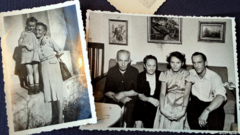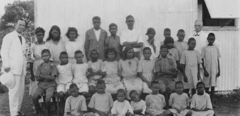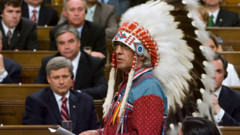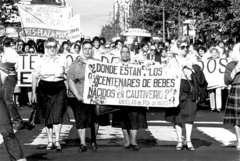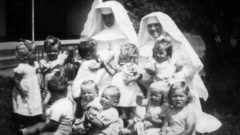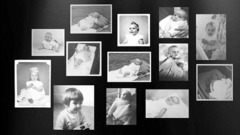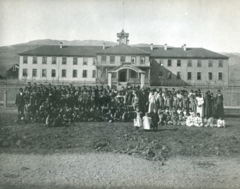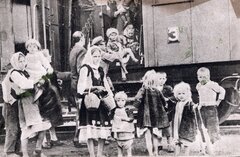Internationale Dimension
Incidences of stolen children drawn from world history
-
Wolf Children
“Wolf children” (in German: Wolfskinder) was the name given to a group (as many as 5,000) of orphaned German children who, at the end of World War II, fled from East Prussia to Lithuania. The circumstances of the Second World War took practically everything from them: their parents, their home, their language and their past.
-
Stolen Generations
The Australian “Stolen Generations” refers to the First Nations (Aboriginal and Torres Strait Islander) children who were forcibly removed from their families between 1910 and 1970 as a result of various government assimilation policies and church missions.
-
Justin Trudeau’s apology
More than 150,000 Indigenous children all over Canada were forced to attend the government-funded religious residential schools from the 19th century until 1980 as a part of an effort to “assimilate the children into Canadian society”. There, children were punished for practicing their traditions and speaking their languages; they were abused and many of them died due to diseases, malnourishment, by suicide or while trying to escape. Many were buried in unmarked graves.
-
Abuelas de Plaza de Mayo
From 1976 to 1983, during the Dirty War, the military junta in Argentina, military and security forces and right-wing death squads hunted down political dissidents. The number of kidnapped and missing people (“desaparecidos”) is somewhere between 10,000 (official estimate) and 30,000 (estimate of the “Madres de Plaza de Mayo” organization). Most of these people are presumed dead.
-
Irish “Mother and Baby Homes”
In the 1900s, having a child outside of wedlock was frowned upon and stigmatized by Irish society. Mother and Baby Homes were state-sponsored religious (mostly Catholic) institutions that were supposed to help these mothers and their babies.
-
Forced Adoptions in Britain
“If you love your baby …”
“Between 1945 and 1975, more than half a million babies were put up for adoption in Britain. Many of the birth mothers were unmarried and say they were forced to give up their babies. Now, they want an apology.”
-
The abuse of Native American children
From 1869 until the 1960s, hundreds of thousands of Native American children were placed in government and church-run boarding schools. They were taken from their families and their homes.
-
The forced displacement of children in the Greek Civil War
The Greek Civil War (1946–1949), fought between the Communist-led Democratic Army and the Greek government forces, with the decisive assistance of the United States, marked the end of World War II in Greece and, at the same time, the first open military conflict of the Cold War in Europe. During the war, which was fought mainly in northern Greece, the civilian populations of the war zones were weaponized by both sides. A significant part of these populations was of Macedonian origin.
